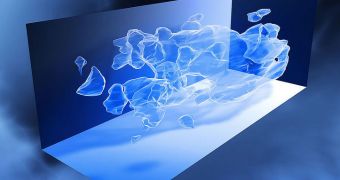Fermilab experts believe they may have discovered why normal matter prevailed in its struggle against antimatter, back when the Universe was in its earliest days.
The existing Standard Model of particle physics is extremely well suited for explaining most of the phenomena and interactions surrounding us, but it's very poor at explaining why we are here at all.
That's right, according to the Model, the planets, moons, galaxies and all other structures in space should not exist at all, ScienceDaily reports.
Theoretically, the idea makes a lot of sense, given that equal amounts of antimatter and normal matter were produced after the Big Bang.
According to the most basic laws of physics, the two types of matter should have annihilated each other, releasing energy in the process, and preventing everything around us from ever being formed.
But, obviously, this was not the case. Astrophysicists have been puzzled as to precisely why this asymmetry occurred for many years, but thus far they failed to produce any valid theories to explain it.
In research papers appearing simultaneously in this week's issues of the APS journals Physical Review Letters and Physical Review D, experts in the United States detail a new idea they developed to explain the asymmetry.
The group, which is based at the Tevatron particle collider, says that its experiments involving proton particle beams revealed that collisions promote the formation of short-lived B mesons.
These elementary particles are inherently unstable, and therefore tend to break down into smaller components. As this happens, slightly more matter than antimatter is produced.
The team is convinced that this may explain why the cosmic asymmetry exists. The Tevatron is operated by the US Department of Energy's (DOE) Fermi National Accelerator Laboratory (Fermilab), in Batavia, Illinois.
While the idea is very interesting, critics say that it has yet to be confirmed by other research groups. If this turns out to be true, then we could finally have an explanation for why normal matter prevailed.
Additionally, it could be that new and exciting types of physics may await discovery, theoretical physicists believe. If the new theory is true, then there is more out there than the Standard Model.

 14 DAY TRIAL //
14 DAY TRIAL //